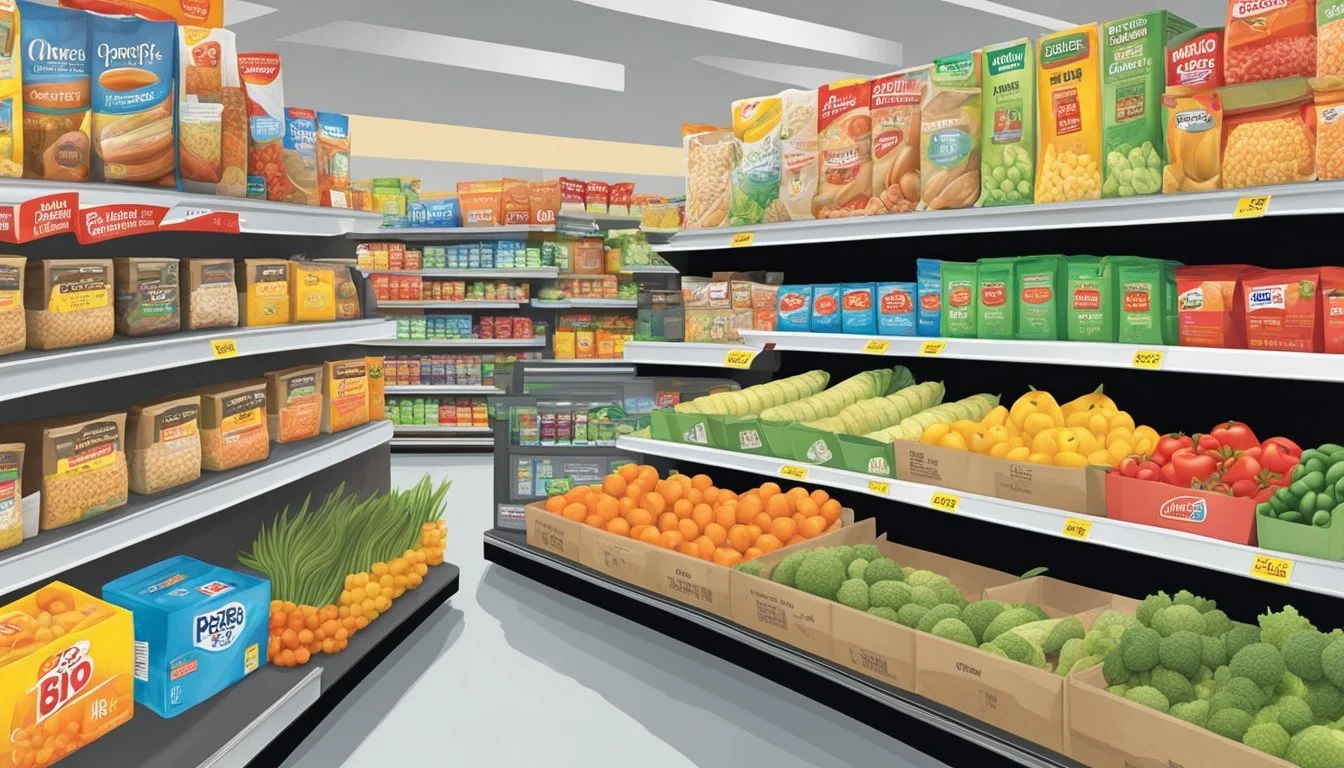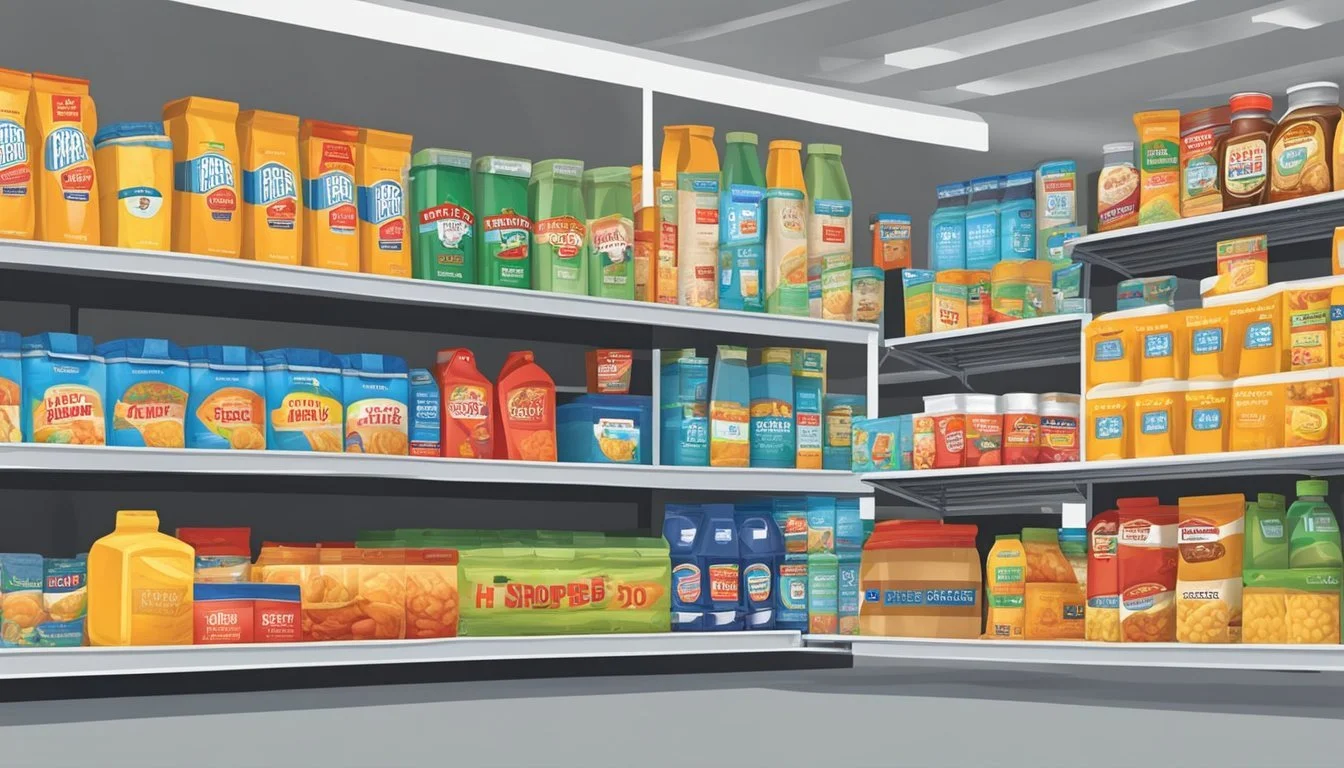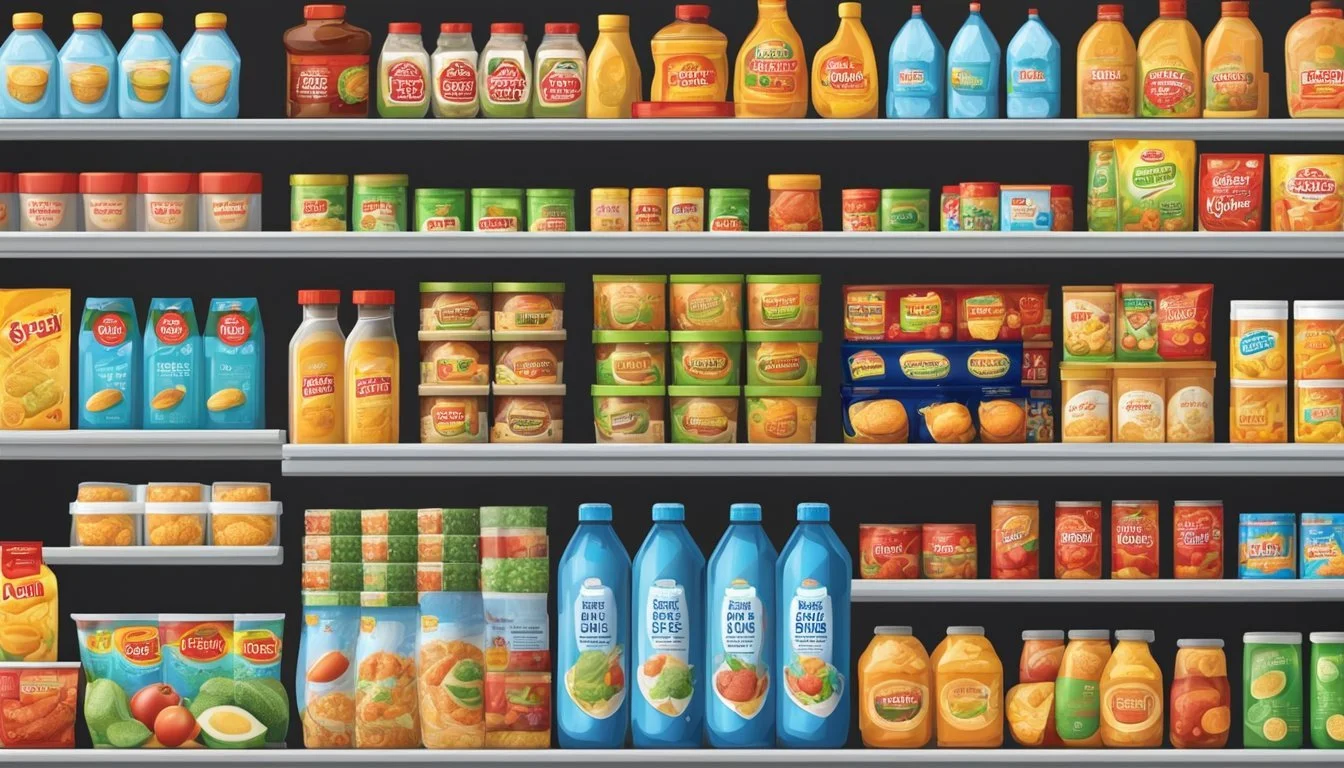Is H-E-B Cheaper Than ShopRite?
Comparing Grocery Prices
Part of Our Grocery Store Guide with Details on H-E-B Prices and ShopRite Prices
In the landscape of grocery shopping, consumers are often on the lookout for the store that offers the best balance between cost and quality. Two prominent players in the grocery store arena are H-E-B and ShopRite. H-E-B, a beloved Texas-based chain, has built a reputation for offering a wide variety of goods, including a surprising range of birthday cakes and other bakery items. On the other hand, ShopRite, with its presence prominently in the Northeast, is known for providing a range of shopping benefits to its customers. The question of which store offers the most cost-effective shopping experience is a common one among shoppers keen on maximizing their grocery budgets.
When examining the relative cost of groceries at H-E-B compared to ShopRite, several factors come into play. Pricing strategies, promotions, and the availability of store-brand items can significantly influence the total bill. ShopRite is often cited for its weekly specials and discounts, which can lead to considerable savings. Conversely, H-E-B is praised for its competitive prices and regular coupon deals. Both stores offer a variety of options for customers, including free returns and exchanges, which can affect a shopper's overall satisfaction and perception of value.
Ultimately, whether H-E-B is cheaper than ShopRite can depend on the shopper's location, the specific items they purchase, and their shopping habits. Regular sales and clearances are common at both grocery store chains, providing opportunities for customers to save. Shoppers are encouraged to keep an eye on local flyers, compare prices, and consider their own shopping priorities when choosing between H-E-B and ShopRite.
Comparative Analysis of Pricing Strategies
This section critically examines pricing strategies within the market, comparing the prices of H-E-B and ShopRite, and considering the impact of geographic location on pricing.
Overview of Market Pricing
In the retail grocery marketplace, competitive pricing strategies are crucial for attracting budget-conscious consumers. This involves analyzing a complex array of factors including but not limited to competitor prices, discounts, and coupons. Major players like Walmart, Costco, Aldi, Publix, Sam's Club, Trader Joe's, and Market Basket set the benchmark for pricing, often leading to aggressive competition within the market.
H-E-B and ShopRite Price Comparison
H-E-B and ShopRite are engaged in a continuous battle to provide value to customers, making for an intriguing price comparison. A selected list of common grocery items indicates that H-E-B often offers lower prices for bulk buys and store-brand items, while ShopRite may present more weekly discounts and promotional offers. A typical price snapshot could be depicted as follows:
Item H-E-B Price ShopRite Price Gallon of Milk $2.99 $3.19 Bread (Store Brand) $1.50 $1.75 Chicken Breast (1lb) $2.49 $2.99 Cereal (Name Brand) $3.00 $3.50
H-E-B's Lean on in-house brands and ShopRite's focus on coupons creates diverse shopping experiences tailored to different customer preferences.
Impact of Location on Prices
The prices in retail chains like H-E-B and ShopRite can vary significantly depending on location, influenced by factors such as local competition, the cost of living, and leasing costs. For instance, an H-E-B located in Texas might have a different pricing strategy than a ShopRite in New Jersey, partially due to the presence of other competitors such as Market Basket in the Northeast which drives regional pricing tactics. The cost of transportation also plays a role; stores closer to distribution centers typically have lower prices as they benefit from reduced shipping costs.
Assortment and Selection
When comparing the product assortment and selection at H-E-B and ShopRite, customers will find variations in the variety of products and availability of specialty items offered by each store.
Variety of Products
H-E-B prides itself on offering a broad selection of goods ranging from name-brand products to generic brands, often under its own store label. The variety here includes typical grocery items alongside bulk goods, ensuring that customers have a wide array of options to choose from. On the other hand, ShopRite also boasts a comprehensive selection that includes many name-brand choices as well as its own labels, catering to a broad consumer base looking for different price points and product types.
Availability of Specialty Products
Specialty products, such as organic, gluten-free, and other health-oriented items, are a growing market segment, and both H-E-B and ShopRite offer a range of products catering to these needs. H-E-B has a strong reputation for carrying a wide selection of organic and gluten-free products, often introducing new items to meet the evolving preferences of its customers. ShopRite similarly provides a substantial variety of specialty items, and customers can expect to find diverse organic and gluten-free options available for purchase.
Customer Loyalty and Rewards Programs
When examining H-E-B and ShopRite, their approach to customer retention is highlighted by their loyalty and rewards programs, which aim to offer savings through various shopper incentives like digital coupons and exclusive deals.
Loyalty Program Structures
H-E-B operates the Points Club Rewards program. It is free to join, and members can sign up by submitting an application at any participating store. Rewards are tracked and can accumulate points, which in turn can be exchanged for discounts or special offers.
In contrast, ShopRite offers the Price Plus Club card, which is also free. Customers can sign up online or in-store, and the card provides immediate access to savings, including store discounts and digital coupons. The program sometimes offers personalized deals based on the customer's shopping history.
Comparing Rewards Benefits
The benefits of each program revolve around the central concept of accruing value for money spent:
H-E-B focuses on rewarding ongoing customer loyalty by providing a points system. Shoppers earn points for every dollar spent, which can be redeemed for discounts on future purchases.
ShopRite leverages immediate discounts at the point of purchase and digital coupon offers, easily accessible through their app or website. This instant savings approach can be appealing to customers who seek immediate rewards.
Both loyalty programs emphasize customer engagement, encouraging repeat visits and fostering a sense of value and appreciation towards regular shoppers.
Store Experience and Services
When comparing H-E-B to ShopRite, one must consider the nuances in store layout and the efficiency of customer service, which play significant roles in shaping the overall shopping experience.
Layout and Design
H-E-B stores typically cover a sizable area, with an average of 70,000 square feet per store, catering to a broad range of products. The design prioritizes navigability and section organization, allowing for a smooth customer flow through wide aisles and well-defined departments. ShopRite, similarly, offers a logical arrangement of goods which aids shoppers in locating items quickly and efficiently.
Customer Service and Staff Efficiency
Both H-E-B and ShopRite focus on staff training to ensure a high level of customer service. H-E-B has earned a reputation for friendly staff who provide quick assistance. ShopRite leverages efficient checkout solutions, highlighting both stores' commitment to reducing wait times. Payment options are extensive, with both accepting major credit cards, contactless payments, and in some locations, mobile payments, further streamlining the checkout process.
Operational and Economic Factors
In assessing whether H-E-B is cheaper than ShopRite, operational and economic factors play a significant role. These include strategies for cost-control, labor costs management, and the impact of purchasing in volume on overall prices.
Cost-Control and Labor Costs
The effectiveness of cost-control measures can significantly influence retail prices. H-E-B, with its strong presence in Texas, benefits from an integrated supply chain that potentially lowers its operational costs. By managing labor costs effectively, a retailer can offer competitive pricing. H-E-B's regional focus may afford it more streamlined labor operations compared to ShopRite's presence across several states, which can lead to variability in labor costs and, by extension, product pricing.
The Role of Volume and Bulk Purchases
Buying in bulk is a common strategy for retailers to save money on inventory costs. Retailers like H-E-B may leverage their large volume purchases to negotiate better deals with suppliers, which can then be passed on as savings to the customer. ShopRite, being part of a cooperative, also has the ability to purchase in large volumes, potentially availing of similar cost savings. The scale of these operations and the volume of purchases can be a crucial factor in determining whether one store can undercut the other's prices.
Promotional and Discount Practices
H-E-B and ShopRite both utilize various promotional and discount strategies to attract customers and offer savings. They invest in coupon usage and digital promotions as well as organize sales events and seasonal offers, ensuring customers have opportunities to save.
Coupon Use and Digital Promotions
Both H-E-B and ShopRite incorporate coupons and digital promotions extensively. H-E-B offers digital coupons directly through their mobile app and website, allowing customers to easily apply discounts with a simple barcode scan at the checkout. These digital coupons contribute to substantial savings on a variety of products. ShopRite similarly leverages digital coupon deals, which can be clipped from their online circular and added to their Price Plus Club Card, a free membership offering additional discounts.
Ease of Use: Shoppers can effortlessly access and redeem digital coupons at both stores.
Savings Opportunities: Regular updates to coupon offerings provide ongoing saving potentials.
Sales Events and Seasonal Offers
When it comes to sales events and seasonal offers, both retailers are active in providing discounts tied to holidays or specific seasons. H-E-B is known for its weekly sales and 'Combo Loco' deals, where purchasing one item nets additional products for free or at discounted rates. During key holidays, they offer themed discounts specific to products in high demand. ShopRite capitalizes on seasonal trends by offering weekly sales that correspond with holidays, and they often feature extensive sale catalogues for major events like Thanksgiving and Christmas.
Weekly Sales: Both stores update their discounted items on a weekly basis, aligning with shopping trends.
Event-Themed Discounts: They each provide themed discounts around holidays to enhance savings on seasonal necessities.
Company Background and Market Presence
In the competitive landscape of the U.S. grocery market, both H-E-B and ShopRite have carved out significant positions through their long-standing histories and targeted market presence.
History of H-E-B and ShopRite
H-E-B began its journey in 1905 with a single store in Kerrville, Texas. It has since grown into a robust chain with over 340 stores spanning Texas and northeast Mexico. H-E-B's market presence is strongly rooted in Texas, where it has become a leading player in the grocery sector.
ShopRite, on the other hand, has a distinct narrative. Part of a larger cooperative, it is a family-owned operation that has served the Northeastern United States for decades. ShopRite has been expanding within this region and solidifying its position among local consumers.
Geographical Market and Demographics
H-E-B has its market concentrated in Texas and parts of northeast Mexico. Its demographic reach is broad, tailoring its services and products to a diverse customer base in these regions. They have also adapted to local tastes and preferences, which has entrenched them deeply into the local community.
ShopRite primarily caters to the U.S. Northeast's demographic, which includes a variety of urban, suburban, and rural communities. Their market presence has been established by understanding and addressing the needs of these diverse groups across several states in the region.
Evaluation of Store Brands and Labeling
In assessing H-E-B and ShopRite, store brands play a crucial role in price competition. Both retailers use their store brand products as a strategy to offer customers lower prices, while labeling provides insights into quality and transparency.
Comparing Store Brand Quality
H-E-B's store brands are recognized for their competitive quality, often matching or exceeding national brand standards. Similarly, ShopRite's store brands, such as Bowl & Basket or Paperbird, are curated to provide consumers with quality alternatives to higher-priced name brands. Customers typically find that both retailers offer a range of quality options within their store brands, from basic to premium lines.
H-E-B:
Essentials: Economical, quality comparable to national equivalents
Select Ingredients: Higher-end products with a focus on natural ingredients
ShopRite:
Bowl & Basket: Quality everyday items at affordable prices
Wholesome Pantry: Organic and free-from options, emphasizing quality and health
Product Label Transparency
Transparency in labeling is another critical factor consumers consider. Both H-E-B and ShopRite provide clear labels to help consumers make informed decisions. For instance, H-E-B's "Select Ingredients" label is designed to highlight products free from high fructose corn syrup and artificial flavors.
H-E-B "Select Ingredients" Label Features:
No artificial flavors
No high fructose corn syrup
ShopRite's commitment to transparency is evident in its "Bowl & Basket" and "Paperbird" lines, which prioritize straightforward labels and indicate whether products meet specific dietary guidelines.
ShopRite Label Transparency:
Clear indication of dietary compliance (e.g., gluten-free, organic)
Unambiguous ingredient listings
Additional Services Beyond Grocery
In addition to offering a wide range of grocery items, H-E-B provides customers with a variety of additional services that extend well beyond typical supermarket offerings. These services include comprehensive pharmacy solutions and various insurance and financial products to meet their customers' diverse needs.
Pharmacies and Health Offerings
H-E-B pharmacies are integral parts of their stores. Customers can easily fill prescriptions while shopping for their groceries. These in-store pharmacies offer flu shots and immunizations, competing with other pharmacy chains like CVS. In line with providing health services, H-E-B has taken steps to integrate health screenings and wellness programs, catering to the health-conscious consumer.
Insurance and Financial Services
H-E-B also delves into insurance and financial services. Customers can access a range of products, such as auto, home, and life insurance policies. In this space, they offer services that mirror those provided by dedicated financial institutions, positioning themselves as a convenient one-stop-shop for shoppers looking to manage their finances alongside their household shopping.
Consumer Behavior and Preferences
The dynamics of grocery shopping have evolved, with H-E-B and ShopRite positioning themselves uniquely within the market. Customers exhibit diverse shopping behavior based on factors such as price, product variety, and store experience. This section explores how consumer feedback and shopping trends impact the comparison of H-E-B and ShopRite with respect to grocery bills.
Survey Results and Customer Feedback
Recent surveys have illuminated customers' appreciation for H-E-B's competitive pricing and the quality of its store brands, which are often cited as reasons for its high ranking in consumer preference indices. In contrast, ShopRite customers frequently praise the retailer for its sales and promotions, which can make a significant difference in their overall grocery bills. Surveys and consumer reports often highlight that:
H-E-B customers appreciate the balance between cost and quality.
ShopRite customers are likely to highlight weekly deals that reduce the grocery bill.
Customer feedback for both chains emphasizes the importance of value for money, with consistent praise for the convenience of store layouts and the variety of products offered.
Shopping Trends and Grocery Bill Influences
The modern grocery shopper is increasingly cost-conscious, looking for the best quality at the lowest possible price, a trend solidified by economic pressures and shifts in consumer loyalty. For H-E-B, shopping trends have indicated that its store brand products and Texas-focused assortment give it an edge among local consumers. ShopRite, on the other hand, leverages robust weekly sales to draw in cost-sensitive shoppers. Key shopping trend observations include:
H-E-B: Strong preference for store brands that offer savings without sacrificing quality.
ShopRite: High responsiveness to sale cycles, impacting customer shopping patterns.
In summary, both H-E-B and ShopRite have adapted to changing consumer behaviors with strategies that resonate with their customer base, influencing how people manage their grocery bills.
Market Expansion and Future Strategies
H-E-B has demonstrated consistent growth and strategic agility in the evolving retail marketplace. The company continues to refine its operations and expansion strategies to maintain a competitive edge.
International Growth and Shipping
While H-E-B has not announced expansion into international markets, international shipping remains a potential avenue for growth. In leveraging existing infrastructure, they could explore options such as:
Partnerships with established international retailers.
Logistics for international distribution, considering financial performance and cost-benefit analysis.
Adapting to Online Competition
H-E-B faces stiff competition from online retail giants like Amazon. The company has formulated strategies to compete, which include:
Investing in e-commerce facilities, directly responding to the online shopping surge and financial performance metrics signaling consumer demand.
Continuation and expansion of delivery services to keep pace with competition from Amazon and other online retailers.
H-E-B's methods suggest a clear path toward maintaining relevance and market share in a retail landscape increasingly dominated by online sales and international shipping capabilities.










